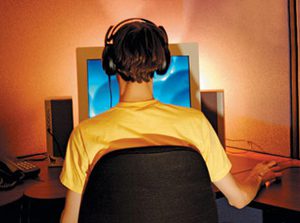A mere eyebrow raise, a mocking glance, or even a nod in the near future could allow computers to “read” your thoughts and emotions.
 |
| Source: BusinessWeek |
This collaboration between British and American scientists has led to the development of special computers capable of “reading” users’ moods and thoughts by analyzing their facial movements and expressions.
Typically, the movements chosen are highly “patterned,” with clear emotions embedded within. With a camera pointing directly at the user to capture every “dynamic” on their face, the computer compares the captured visual data against a rich “psychological” database stored in its memory.
According to Professor Peter Robinson from Cambridge University in the UK, applications for this “thought-reading” technology are vast, ranging from enhancing users’ driving skills to mood-based advertising.
“Imagine a computer that can accurately gauge your mood, your frustrations, to sell you a ‘hot’ item. A future where mobile phones, cars, and websites can read minds and interact with users’ emotions,” he stated.
Currently, Professor Robinson’s research team has programmed this technology to recognize facial nuances created by actors. He hopes to add more data so that computers can more accurately assess users’ boredom, excitement, confusion, agreement, or dissatisfaction in the future.
Meanwhile, Professor Robinson’s collaborators from the Massachusetts Institute of Technology (MIT) hope that computers will also be able to accept other “inputs” such as hand movements and body posture.
“Our research will allow websites to adjust advertisements according to the mood of the web surfer. For instance, a webcam linked to this software will process images, accurately encode the mood, and send that information back to the website,” Robinson expressed with confidence.
Moreover, this technology could be very useful in remote education, as instructors would be able to discern whether their students truly understand the material. Similarly, a “smart” car would know when the driver is confused, bored, or tired, enabling it to take appropriate measures to ensure road safety.
“We are collaborating with a major automotive company, and they hope to implement this technology in their models within the next five years,” Robinson revealed. So, don’t be surprised if a camera appears on your car’s electronic dashboard!
Thien Yi




















































